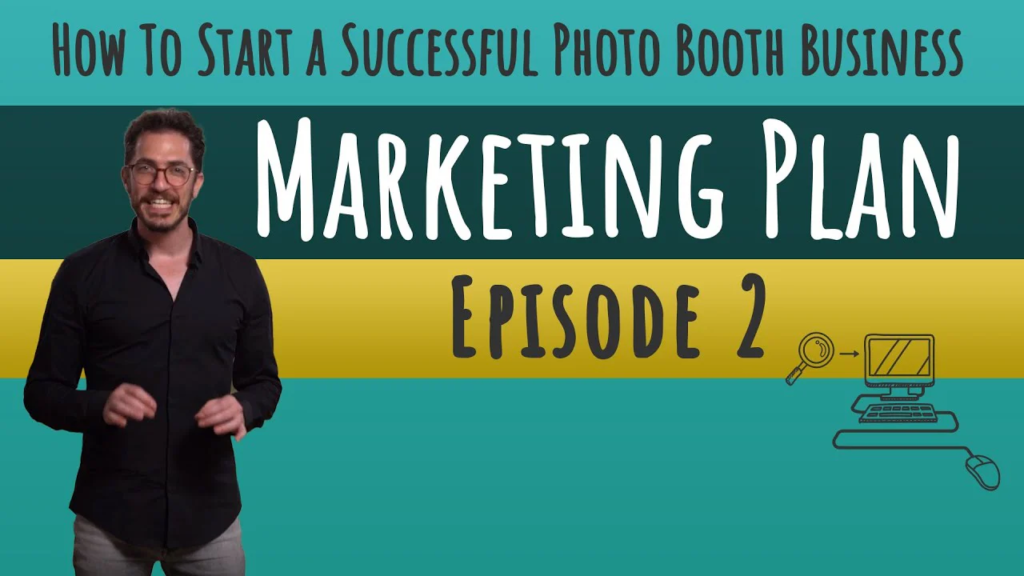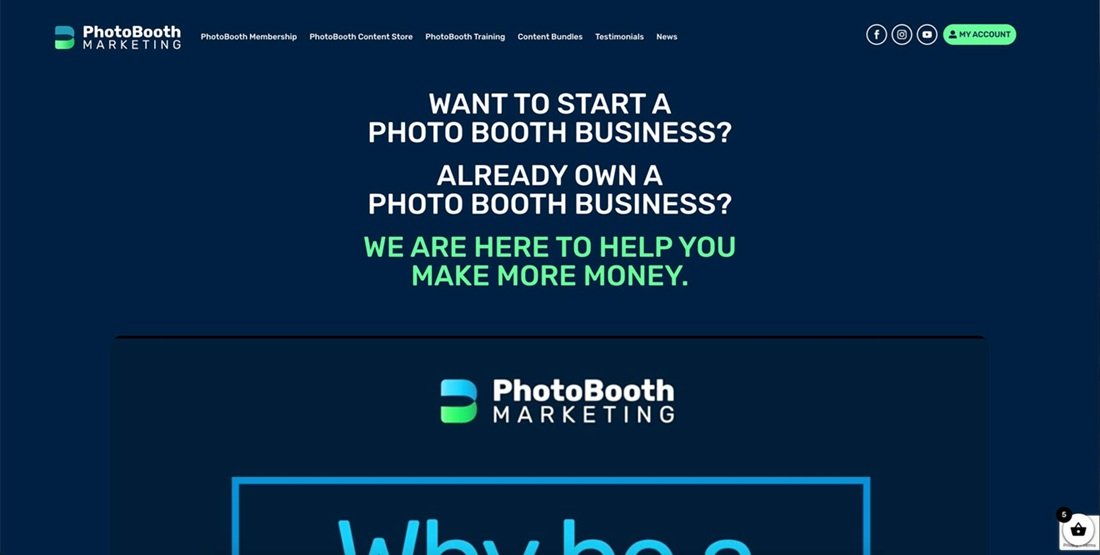Starting a How to Start a Photo Booth Business can be a profitable and exciting venture, especially with the growing demand for unique and engaging experiences at events such as weddings, parties, corporate events, and more. Photo booths offer an interactive and fun activity, creating memorable moments for guests while providing hosts with souvenirs. In this guide, we’ll walk you through the steps to successfully start and run a photo booth business.
Step 1: Understand the Photo Booth Business Model
Before diving into any business, it’s crucial to understand how the industry works and what’s involved. A photo booth business typically involves providing event hosts with a photo booth setup, props, and technology to capture fun, candid pictures. The images are either printed instantly or shared digitally with guests. The business model can be service-based, where clients rent the photo booth for a specific duration at an event, or it can include photo prints, digital files, and additional services like custom backdrops or instant social media sharing.
Key Components of the Business Model
- Photo Booth Setup: You’ll need to invest in high-quality photo booth equipment, including cameras, lighting, backdrops, and printers.
- Props and Customization: Offering fun props and the ability to customize the photo booth for different events is a great way to attract clients.
- Staffing: Depending on the size of your business, you may need to hire employees to operate the booth at events.
- Pricing: Pricing your service will depend on factors like location, event duration, and any added services you offer.
Step 2: Research the Market

Before launching your photo booth business, it’s essential to conduct market research to understand your target audience, local competition, and pricing strategies. The photo booth industry can be competitive, so it’s important to identify ways to differentiate your service.
Consider Your Target Market
Your target market will likely consist of:
- Weddings and Parties: These events are the most common for photo booth rentals.
- Corporate Events: Companies may rent photo booths for trade shows, conferences, or team-building activities.
- Promotions and Marketing: Many brands use photo booths for experiential marketing at product launches or campaigns.
Research local event planners, wedding coordinators, and venues to get an understanding of where to direct your marketing efforts.
Step 3: Create a Business Plan
Every successful business begins with a solid business plan. This document outlines your goals, target market, financial projections, and strategies for growth. Your business plan should include:
Key Elements of a Business Plan
- Executive Summary: A brief overview of your business, its mission, and vision.
- Market Research: Information on the demand for photo booth services in your area, competition, and customer demographics.
- Business Structure: Will you operate as a sole proprietor, partnership, or limited liability company (LLC)?
- Marketing Plan: How will you attract customers? Will you focus on social media marketing, networking with event planners, or SEO for your website?
- Financial Plan: Your startup costs, projected revenue, and expected expenses. Be sure to include costs for equipment, insurance, marketing, and employee wages.
- Goals: Short-term and long-term goals to measure your business’s success.
Step 4: Purchase the Right Equipment
The quality of your photo booth equipment is crucial to the success of your business. You’ll need to invest in several key items to ensure you provide a top-notch service to your clients.
Essential Photo Booth Equipment
- Camera: A high-quality DSLR camera is necessary to ensure clear and professional images.
- Lighting: Proper lighting is essential for quality photos, especially in low-light environments. Consider ring lights or softbox lighting.
- Backdrops: Depending on the event, backdrops can be customized to match themes, or you can offer a range of standard options (e.g., white, black, or themed).
- Printer: A high-speed printer is needed to print photos on-site for guests. Consider printers that can print on different sizes of photo paper.
- Photo Booth Software: Software is essential for managing photo booth functionality, including printing, sharing, and customizing photos.
- Props: Offering a variety of fun props (hats, glasses, signs) adds excitement to the experience.
Additional Equipment and Options
- Social Media Sharing: Many clients love to share their photos instantly on social media. Consider investing in Wi-Fi enabled booths that allow for easy sharing.
- Customizable Prints: Offer clients the option to have personalized templates, such as event logos or custom messages on their photos.
- Video Recording: Some clients may want a video booth feature where guests can record short video messages.
Step 5: Set Your Pricing

Pricing is a critical aspect of your photo booth business. It’s essential to balance your pricing structure so it covers costs and generates profit while remaining competitive.
Factors to Consider When Pricing
- Event Duration: Charge based on hours of service. A typical photo booth rental is 3-4 hours.
- Customization: Customizable features like props, backdrops, and photo templates may come at an additional cost.
- Add-Ons: Offer extras such as unlimited prints, guest books, or online galleries for an additional fee.
- Travel Fees: If you’re servicing areas outside your local region, include travel expenses in your pricing.
Research the rates of competitors in your area to set a price that reflects your services and equipment quality.
Step 6: Develop Your Online Presence
Having an online presence is crucial in today’s digital world. A website and social media profiles will help potential clients find you and book your services.
Essential Online Tools
- Website: Build a professional website showcasing your services, packages, and testimonials. Be sure to include high-quality photos of your photo booth setups and event photos.
- Social Media: Create accounts on platforms like Instagram, Facebook, and Pinterest to share your work. Social media is a great tool for showcasing your photo booth in action and engaging with potential customers.
- SEO: Optimize your website for search engines so that when people search for “photo booth rental” in your area, your business appears at the top.
Marketing Strategies
- Networking: Connect with event planners, wedding venues, and corporate event organizers. Attend local bridal shows and networking events to promote your business.
- Promotions: Offer discounts or package deals for first-time clients or during off-peak seasons.
- Reviews: Encourage happy clients to leave positive reviews on your website, Google, and social media pages.
Step 7: Launch Your Business

Once everything is in place—equipment, pricing, online presence, and marketing—you’re ready to launch your photo booth business. Here are some tips for a successful start:
Launch Tips
- Offer Special Promotions: Consider offering a limited-time discount or special package for your first few clients to build momentum and generate word-of-mouth referrals.
- Start Small: Begin by offering services for smaller events before tackling larger weddings or corporate events. This allows you to gain experience and build a portfolio.
- Track Your Finances: Keep detailed records of your income and expenses to ensure your business is profitable and sustainable.
Conclusion
Starting a How to Start a Photo Booth Business can be an exciting and lucrative venture if done correctly. With the right planning, equipment, and marketing, you can build a business that provides fun experiences for your clients while generating a steady income. Focus on offering exceptional customer service, high-quality photos, and memorable experiences to build your brand and grow your business.
Desclaimer
The information provided in this article is for general informational purposes only. While we strive for accuracy, we do not guarantee the completeness or reliability of the content. Readers are encouraged to conduct further research and consult with professionals before making business decisions. We are not responsible for any outcomes.










